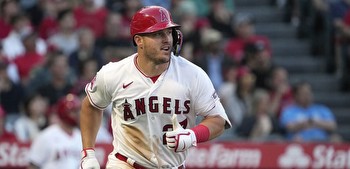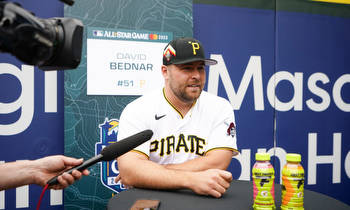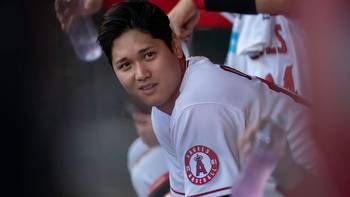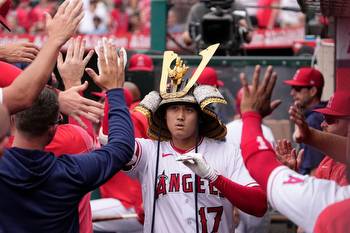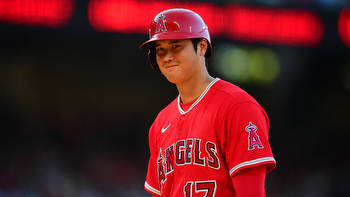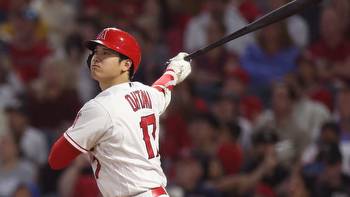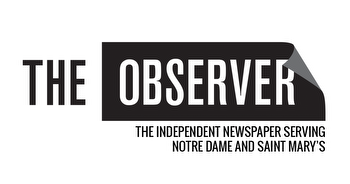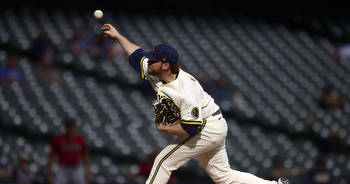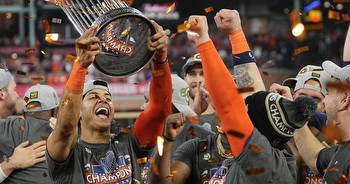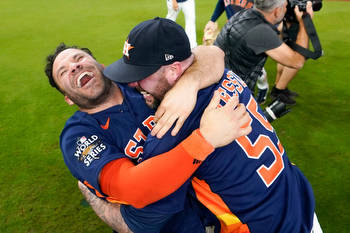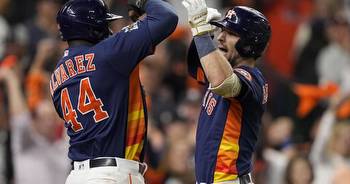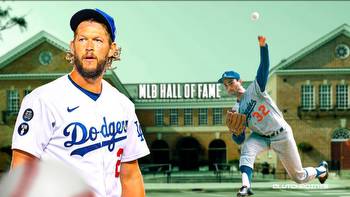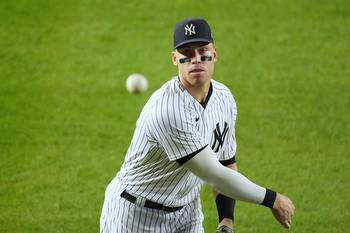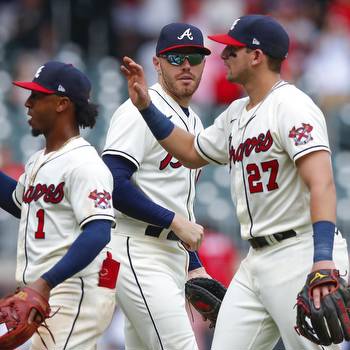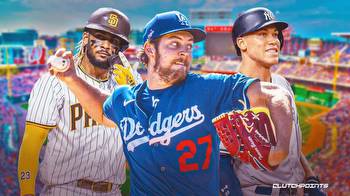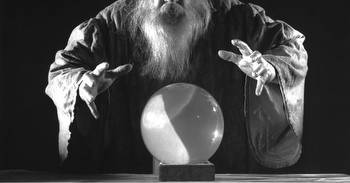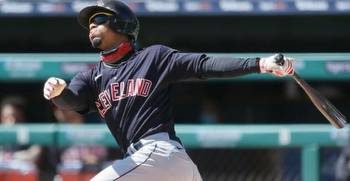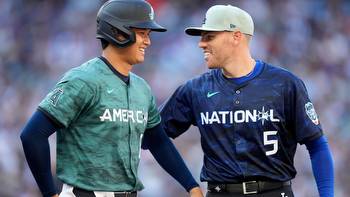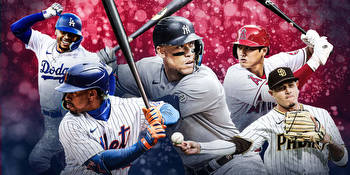5 MLB stars whose injury returns could swing the playoffs
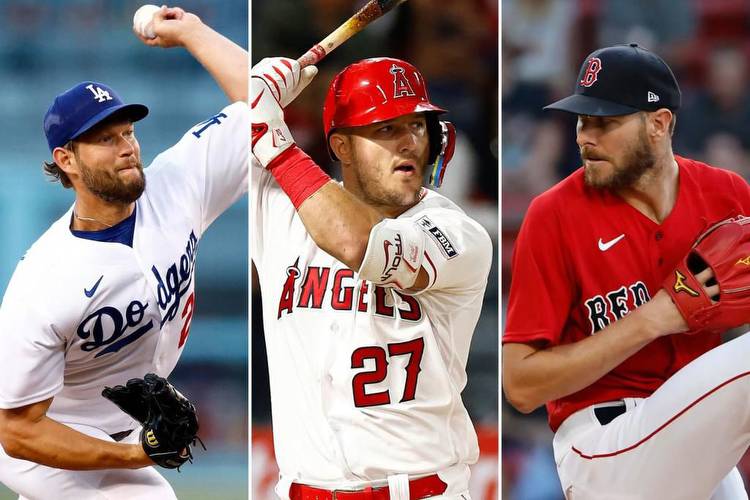
By mid-July, every contender has pretty much summoned the prospects they feel can best help a playoff drive.
Then the trade deadline arrives and with it the last chance to externally improve a roster — unless some unheralded waiver claim leaps out of nowhere.
So the last meaningful way for a roster to improve is the return of injured players. There are no guarantees, of course. The Yankees waited a quarter of a season for Aaron Judge to come off the injured list — yet even when he did, the Yankees offense still had no fight.
Maybe the returns of Jonathan Loaisiga and Nestor Cortes will help this version of the Yankees meet, of all things, the Fred Wilpon low-bar mandate of meaningful September games. But since neither can hit, it projects as rather unimpactful.
So in this week’s “Got my attention,” I went looking for whose possible return from the injured list might have the largest impact on a team:
1. Clayton Kershaw. For half a season, the Hall-of-Fame bound lefty was in play for his first Cy Young Award in nine years and the fourth of his career. But then he incurred what the Dodgers termed shoulder inflammation. He has blown by the initial rosy projection that he would return from the IL on July 15, when he was first allowed to be reinstated.
In his 16th year with the Dodgers, Kershaw is arguably as important as ever due to a variety of factors. A good starting point was the Dodgers’ mistake in thinking they had negotiated a bargain when signing Trevor Bauer for three years at $102 million after he won the 2020 NL Cy Young as a Red.
Bauer pitched half a season with the Dodgers before he was placed on administrative leave while allegations of a sexual assault were investigated. Bauer ultimately was suspended for two seasons by commissioner Rob Manfred, which would have covered the rest of the term of the contract through this season. But last offseason, an arbitrator reinstated Bauer for 2023 with most of his pay intact.
The Dodgers had been trying to stay under the lowest tax threshold of $233 million with a general belief that they were preparing to try to sign Shohei Ohtani in free agency after this season. But the restoration of most of Bauer’s contract pretty much assured they would go over the threshold.
Still, they had not done much to address a rotation that they knew would be without Walker Buehler for much or all of the season (he might be available in September). Noah Syndergaard was signed and was a disaster before being dealt to Cleveland. Dustin May pitched well before being lost for the season when he needed elbow surgery. Julio Urias, in his walk year, missed six weeks due to a hamstring injury and has a 4.98 ERA.
Tony Gonsolin has been good, but not nearly as effective as he was last year. The Dodgers have had four rookies — Gavin Stone, but mainly Michael Grove, Bobby Miller and Emmet Sheehan — combine to make 32 starts with a 6.14 ERA.
It is why the Dodgers obtained Lance Lynn, though he had a 6.47 ERA with the White Sox. The Dodgers felt their advanced pitching program would have a positive impact on Lynn. But also that, at minimum, he was a bulldog who could provide innings depth. They also worked out a trade on deadline day for Detroit’s Eduardo Rodriguez, but he invoked his no-trade clause to block the deal, much as Lynn had done in making it clear he would not go to the Rays.
Instead, the Dodgers obtained the hybrid starter/reliever Ryan Yarbrough from the Royals as another way to cover innings.
But what they need is Kershaw to return healthy to the top of the rotation. He last started on June 27. From that day through the deadline, the Dodgers rotation had a 6.01 ERA — only Pittsburgh’s 6.31 was worse.
Before going on the IL, Kershaw had a 1.09 ERA in his last five starts and a .181 batting average against. Maybe the Dodgers can hold on to win the NL West without Kershaw. But it is difficult to see how they survive multiple playoff rounds without him.
2. Max Fried. The Braves are going to win a sixth straight NL East title because in the time it took you to read this sentence, they probably hit two more homers.
Thus, one of the biggest days of this season is Friday, when Fried is scheduled to return from a strained left forearm. Fried finished second for the NL Cy Young last year. Kyle Wright won 21 games and was 10th. The two have combined for 10 starts this year, and neither has pitched since May. Wright is only now throwing bullpen sessions, and his return date is likely in September.
If the Braves have Fried, Wright, Spencer Strider and Charlie Morton fully healthy for October, they are going to be even stronger favorites to win a second championship in three years. As the ace, Fried is most important, especially because the Braves did not address starting pitching at the deadline. They bolstered their bullpen by acquiring Pierce Johnson and Brad Hand while getting A.J. Minter off the IL, with the likelihood the relief corps eventually will add Jesse Chavez and Dylan Lee from the IL as well.
That helps in the end game. They need Fried as their Game 1 starter.
3. Mike Trout. The biggest decision at the trade deadline was a player not moved. The Angels decided to hold onto Ohtani, which led to them going for the playoffs instead by acquiring Lucas Giolito, Reynaldo Lopez, C.J. Cron and Randal Grichuk.
The Angels were operating on multiple paths. They have not been to the playoffs since 2014, tied for the longest drought with the Tigers. So they want to get there. But they also want to get there as a symbol to Ohtani that he can win as an Angel as part of an inducement to convince the best player in the world to stay.
The other pull is to try to win with Trout. When the Angels last made the playoffs, Trout was in his age-22 season and won the first of his three MVPs. But the Angels were swept in three games by the Royals.
Trout turns 32 next week. For the third straight year, he has missed a lot of time with injury. He fractured his left hamate bone, and has been out since early June. The normal timeline should have him back in late August or early September.
The Astros and Rangers also bulked up. Both expect key contributors back from the IL — Michael Brantley and Jose Urquidy for the Astros; Nathan Eovaldi for the Rangers. Can the rest of the refortified Angels hold on long enough to allow Trout to have an impact on the AL West race or at least to push for a wild-card berth?
4. Hunter Greene. The Reds finished deadline day leading the NL Central. They did nothing to address their rotation, though, merely adding a lefty reliever in Sam Moll. They had climbed into the race without Greene (hip) having pitched since June 17 and without Nick Lodolo (leg) since May 6. Those were supposed to be the Nos. 1-2 starters.
Rookie left-handers Andrew Abbott and Brandon Williamson have done well in covering innings, and Graham Ashcraft has assembled a six-start run in which he has a 1.75 ERA.
Greene is due back Aug. 20 and Lodolo perhaps 10 days later. When the Reds drafted Greene second overall in 2017 and Lodolo seventh overall two years later, the hope was that they would form the top of the rotation for a contender. Can they come back from the IL as that?
5. Chris Sale. Since the beginning of 2020, the injury-beset Sale has made 22 starts — half of them coming this year with a 4.58 ERA. He last started on June 1, and then was placed on the IL because of a stress reaction in his left shoulder.
Sale is on a rehab assignment. He is perhaps a few weeks away. But the Red Sox basically stood pat at the deadline, not addressing a rotation that needs reinforcement. That is why the return of Sale — and probably Tanner Houck and Garrett Whitlock, too — is even more important than Trevor Story’s imminent return after Tommy John surgery — though the best version of Story clearly would make an already strong offense even more so.
Whose career do you got?
The storyline of this trade deadline was that the prices were exorbitant on starters and bats were pretty much non-existent.
Fourteen position players who had at least 200 plate appearances were traded in the last week. Want to guess who the top three were in OPS-plus?
I will waste a little time here in this paragraph so you can guess if you want, but don’t look any lower because the answers are:
1. Jeimer Candelario (128)2. Randal Grichuk (121)
3. Jake Burger/Paul DeJong (115)
I am going to assume no one had that on their bingo card, say, even a month ago.
Here is the rest of the list: 5. Tommy Pham (109), 6. Mark Canha (102), 7. C.J. Cron (99), 8. Carlos Santana (97), 9. Josh Bell (96), 10. Amed Rosario (89), 11. Jace Peterson (85), 12, Rodolfo Castro (83), 13. Josh Rojas (64), 14. Enrique Hernandez (61).
Not exactly Murderers’ Row.
But this is the group, so rather than ask whose career do you got this week, how about: “Whose rest of the season do you got?”
If I had to guess: Give me Cron, a good professional hitter who will be surrounded by a veteran lineup with the Angels. Though my gut says Rosario will end up being very useful for the Dodgers, too.
Awards Watch
The pitchers to beat for the Reliever of the Year awards — named for Mariano Rivera in the AL and Trevor Hoffman in the NL — are a pitcher whose 2023 looks a lot like Edwin Diaz’s 2022 for the AL and Edwin Diaz’s brother in the NL.
That would be the Orioles’ Felix Bautista and the Reds’ Alexis Diaz.
It is not common for a reliever to reach 3.0 Wins Above Replacement — usually one or two do it in a season. There were three last year (Baseball Reference version): the Rockies’ Daniel Bard and the Diaz brothers.
Edwin won the Hoffman award last season (he also won the Rivera award in 2018 as a Mariner).
Bautista already was at 3.1 WAR in early August. Blake Treinen was the last to reach 4.0, when he did so with the A’s in 2018.
What particularly stood out about Edwin Diaz last season was that he struck out 50.2 percent of hitters he faced, which tied Craig Kimbrel for the second best all-time behind Aroldis Chapman’s 52.5 percent for the Reds in 2014. Bautista was at 50.8 in 2023.
Edwin Diaz finished 2022 with 61 appearances covering 62 innings with a 1.31 ERA and a .446 OPS against. In his first 47 outings of 2023 covering 51 ⅔ innings, Bautista had a 0.87 ERA and a .419 OPS against.
Bautista is running away with this award. And what should concern the AL for the rest of this season and in a short playoff series is that the runner-up is arguably Bautista’s Orioles teammate, Yennier Cano.
Alexis Diaz led the NL in appearances (50) and the majors in saves (32). He has not been as dominant as his brother was last year, nor does he have the kind of clear front-runner status that Bautista does in the AL. Pittsburgh’s David Bednar and San Diego’s Josh Hader, in particular, are strongly in the conversation with Alexis Diaz.
Roster stuff maybe only I notice
In recent weeks, as the Yankees’ offense has struggled, fan calls for the team to promote Estevan Florial have intensified. Florial has put up a terrific season at Triple-A — a slash line of .297/.390/.588 for a .978 OPS with 23 homers and 19 steals.
I think the Yankees have not promoted Florial for several reasons. I suspect they thought he could have been a second or third piece in a trade before Tuesday’s deadline and did not want him potentially lowering his value with more sporadic major league play.
Florial also doesn’t have any options left. When the Yankees sent him down very early this season, they had to pass him through waivers. I was surprised that a team expecting to have a bad season, such as the Nationals or Royals, didn’t take a shot on him to see if he could produce good results with consistent at-bats, combined with what is viewed as above-average defense.
Without an option, if the Yankees brought him up again and wanted to send him down, they would have to once more subject him to waivers and likely lose him. In the short run, they have liked the at-bats of especially Jake Bauers and Billy McKinney and what Greg Allen could provide as a late-game runner or defender. All are lefty-swinging outfielders. Florial was still striking out 29.4 percent of the time at Triple-A, which projects to be even higher in the majors.
It is possible that over these next two months, especially if the Yankees continue to slip out of the playoff race, they will take one more extended look at Florial to know for sure whether to keep him on the roster for 2024 or not. But Florial was placed on the seven-day minor league IL on Wednesday.
For now, though, Florial occupies the spot of the player succeeding at Triple-A who Yankees fans are irate is not in the majors. In the recent past, it was Miguel Andujar, who, like Florial, would then fail in sporadic major league at-bats.
And here is something for you: Do you know who is leading the International League in hitting at .361? That would be Andujar. And the terrible Pirates, who have twice designated Andujar for assignment, are not rushing to bring him back to their flawed roster.
Which brings us to a key issue when you are looking at these stats — pitching at Triple-A stinks. Want some proof? Let’s wander through some ghosts of Yankees past — because it is not just Florial who is thriving at Triple-A.
Blake Rutherford, who was the Yankees’ first-round pick in 2016 and a key part of the 2017 deadline trade with the White Sox that brought Todd Frazier, Tommy Kahnle and David Robertson, never has reached the majors. At Triple-A this year, he’s hitting .349 with a .947 OPS.
Jake Cave had 47 extra-base hits in 59 Triple-A games before he was summoned by the Phillies. In the majors he was hitting .218 with a .596 OPS.
Luke Voit has a 1.035 OPS for the Mets’ affiliate at Triple-A. Franchy Cordero had a 1.033 OPS at Triple-A and a 17.4 walk percentage compared to a 21 percent strikeout rate. With the Yankees this year, he had a .690 OPS with a 2.8 percent walk rate and 35.2 percent strikeout rate.
Clint Frazier at Triple-A had a .966 OPS. It was .545 in a few weeks with the White Sox.
Jameson Taillon began his July 7 start against the Yankees with a 6.89 ERA and with the growing sense that the Cubs had made a mistake by signing him away from the Yankees for four years at $68 million. Even when he shut out the Yankees over eight innings, that read more as a reflection of the Yankees’ terrible offense.
But it began a four-start span in which Taillon has pitched to a 1.78 ERA. The Cubs have gone 4-0 in those outings, which have been particularly valuable because it has coincided with a nosedive by Marcus Stroman, who had been their ace in the first half. Taillon’s four starts, though, have come against last-place clubs: the Yankees, Nationals and two vs. the Cardinals.
Taillon faces the first-place Reds on Thursday. The Cubs, helped greatly by Taillon, played well as the trade deadline neared, convincing them to buy rather than sell. They began Wednesday four games out of first place.
